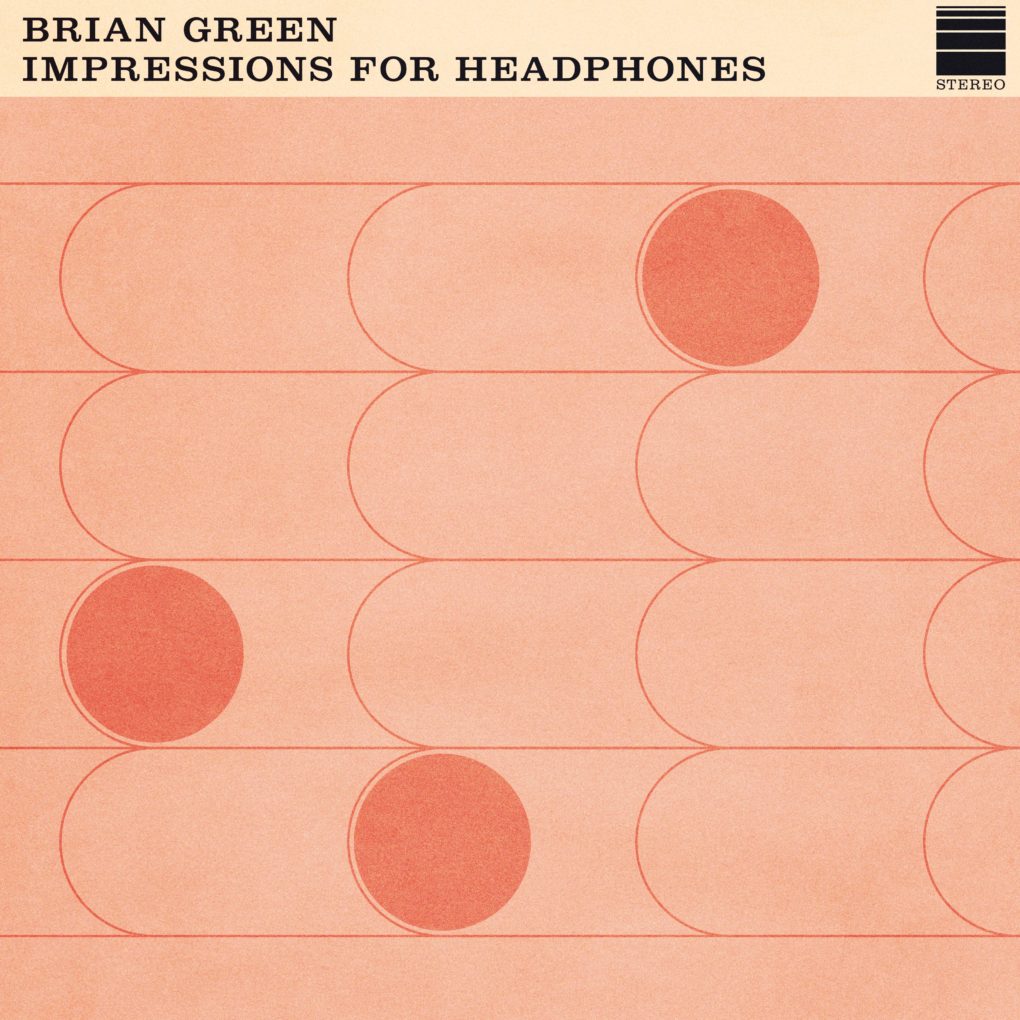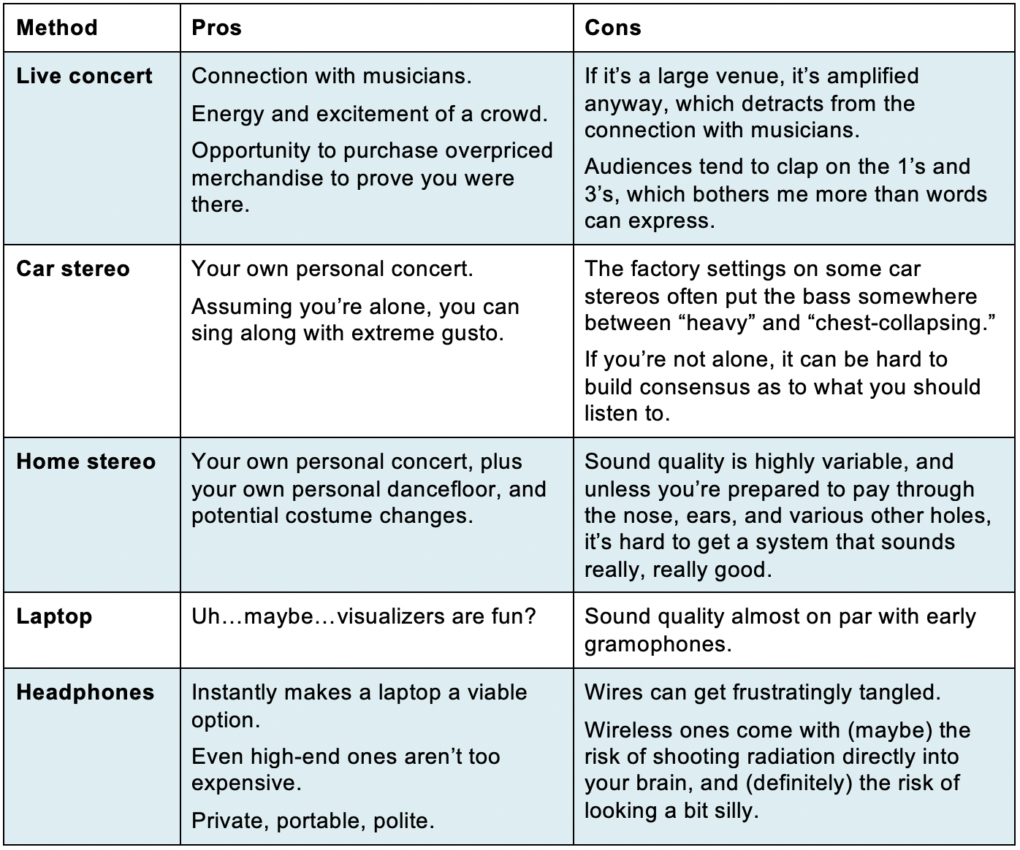
What’s the best way to listen to music?
It’s the kind of question that would only really be interesting to the type of person who…well, the type of person who would visit a blog like this one.
Before the advent of recorded (and amplified) music, it’s a question that wouldn’t have required asking. Until a few generations ago, if you wanted to listen to music, you had two options: make it yourself, or be within earshot of someone who was making it.
Now, of course, we can listen virtually whenever or wherever we want, and music can make its way to our ears via the tiniest (and tinniest) of laptop speakers to the biggest and bassiest multi-thousand-watt arena sound systems. So, because nobody asked, here’s my quick guide to the pros and cons of the most common methods of music-listening:

I’m a big fan of headphones, and an equally big fan of musicians who create with the headphone listener in mind.
Most music is mixed and mastered on headphones (or on speakers that are far too expensive for the average person) so it makes sense that the best way to listen to recorded music, music made in a studio by people who care about sonic detail, is through a good pair of headphones.
Brian Green is someone who cares about sonic detail, and his album Impressions for Headphones, released last week, is a feast for those of us who like to immerse ourselves in music.
What makes this a beautiful song:
1. The opening guitar, which is the piece’s central instrument, is the “closest” instrument to the listener’s ears. It’s got great character to it, too; slightly de-tuned, with the almost-imperceptible static of a guitar amp giving a sense of texture.
2. The acoustic guitars that join that first instrument are panned left and right, giving a sense of balance.
3. Other sounds – pedal steel guitars, ethereal tones – appear further back in the mix, with miles of reverb on them, giving a sense of space.
Recommended listening activity: Looking really closely at something you see every day but have never really looked at.